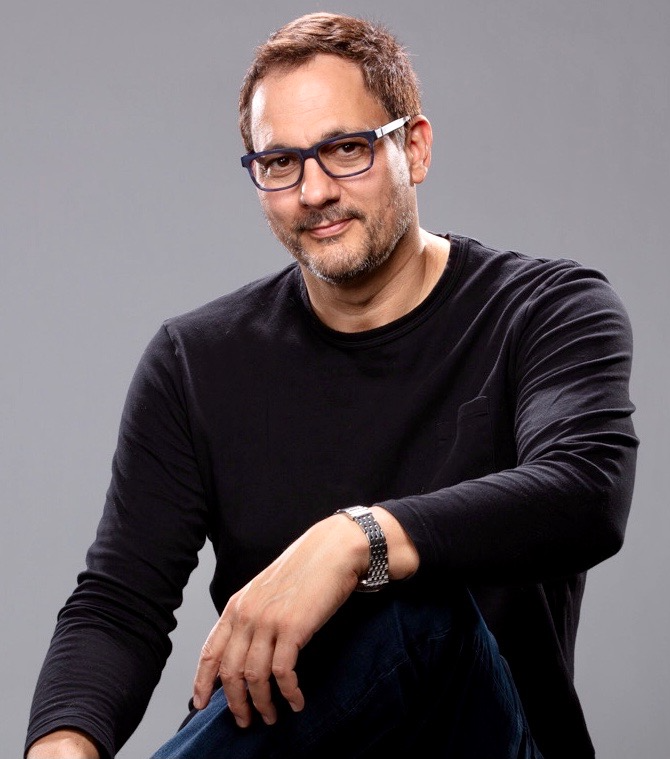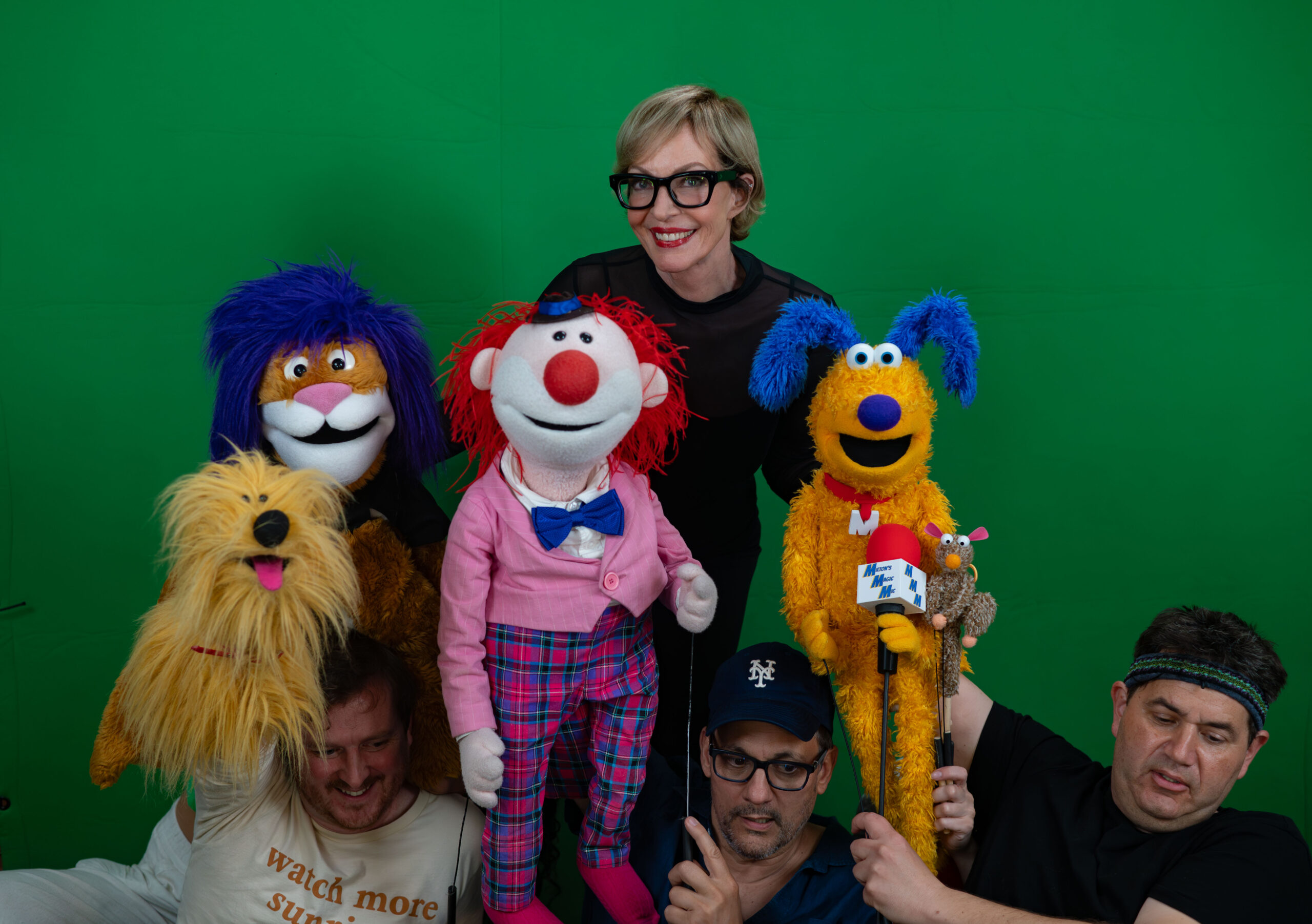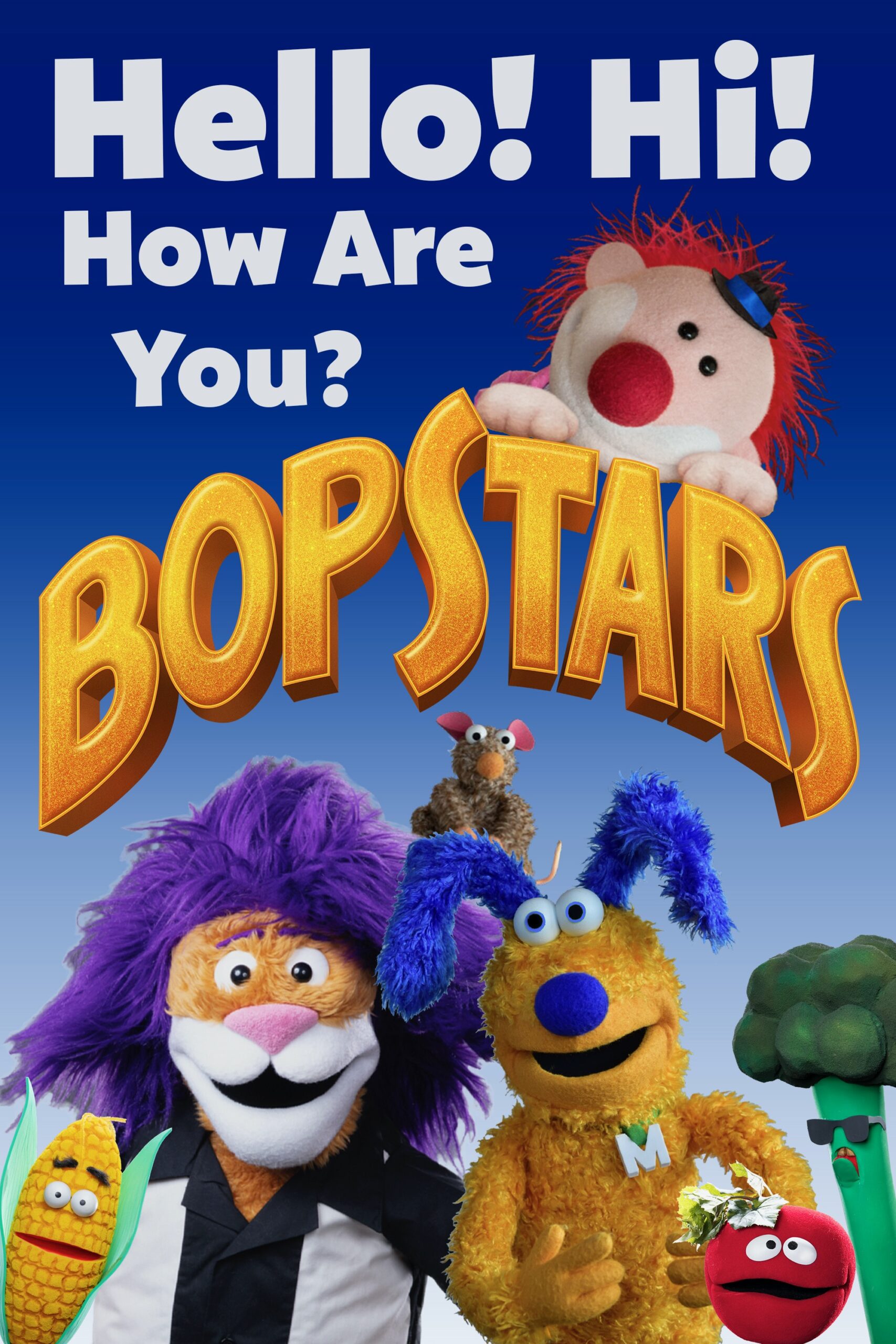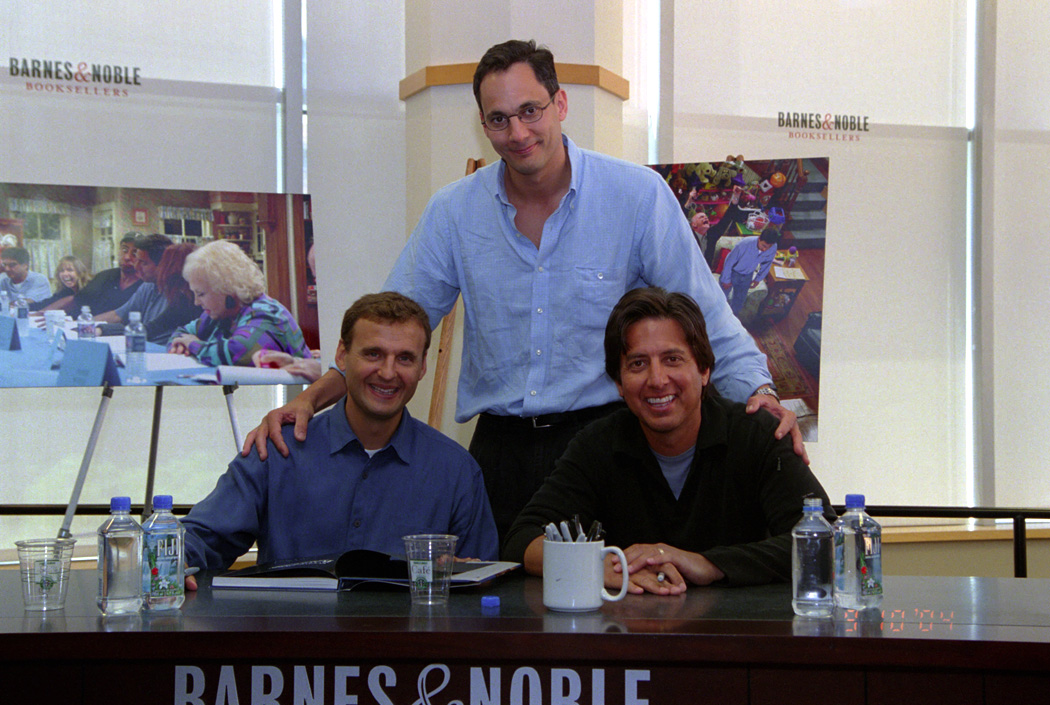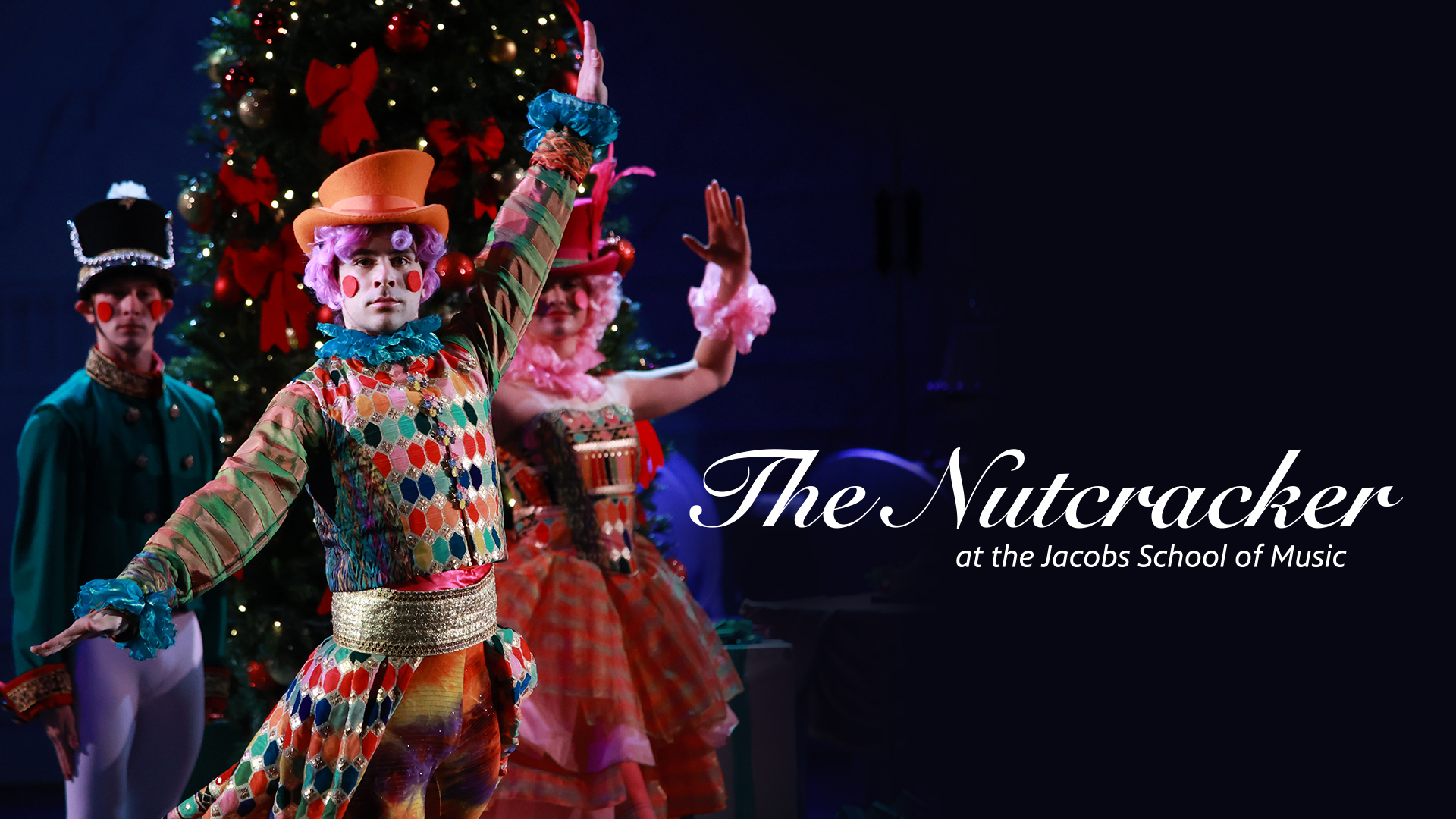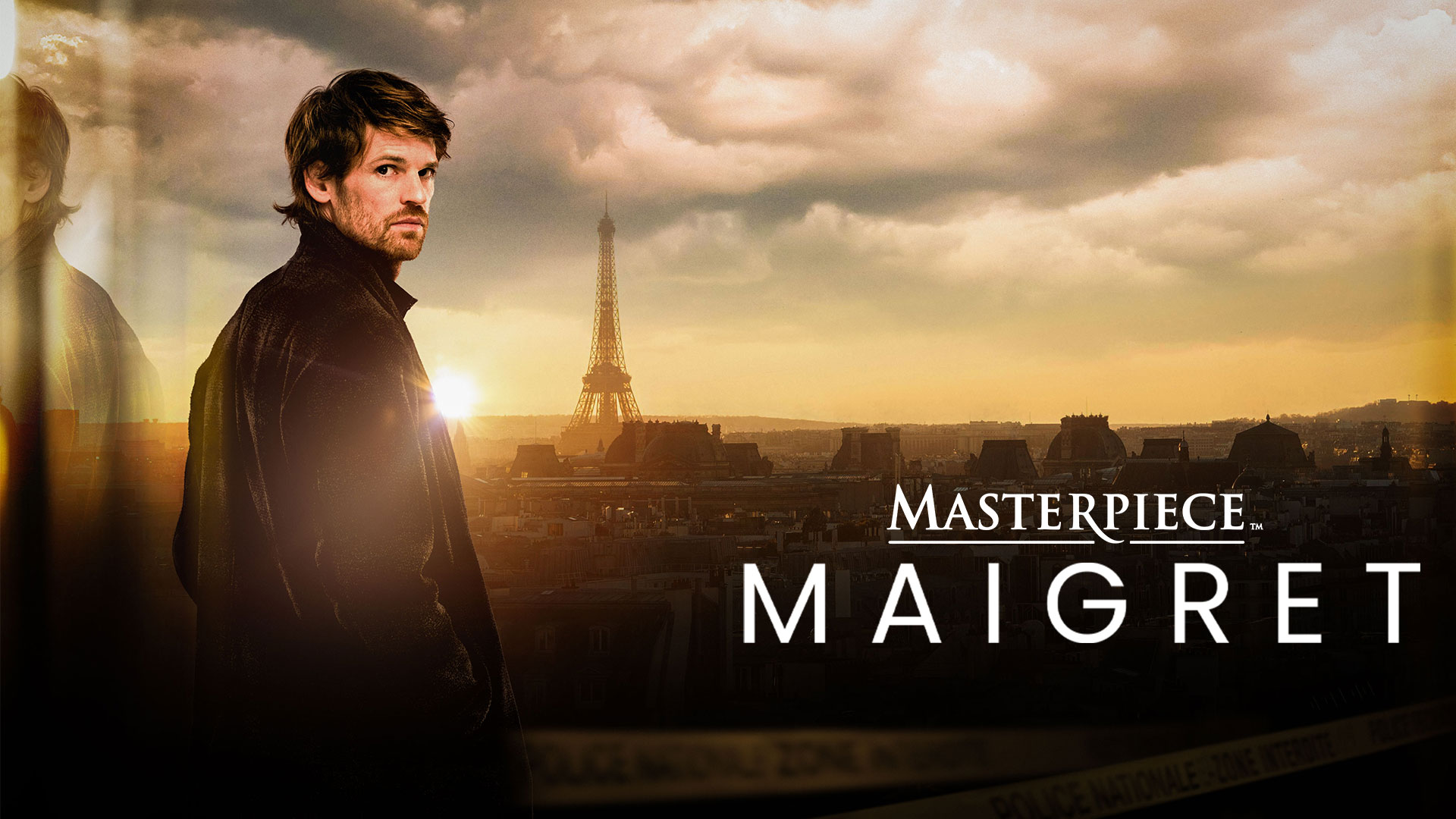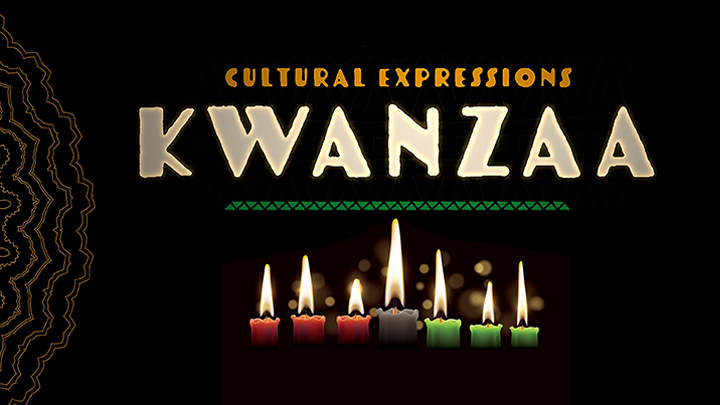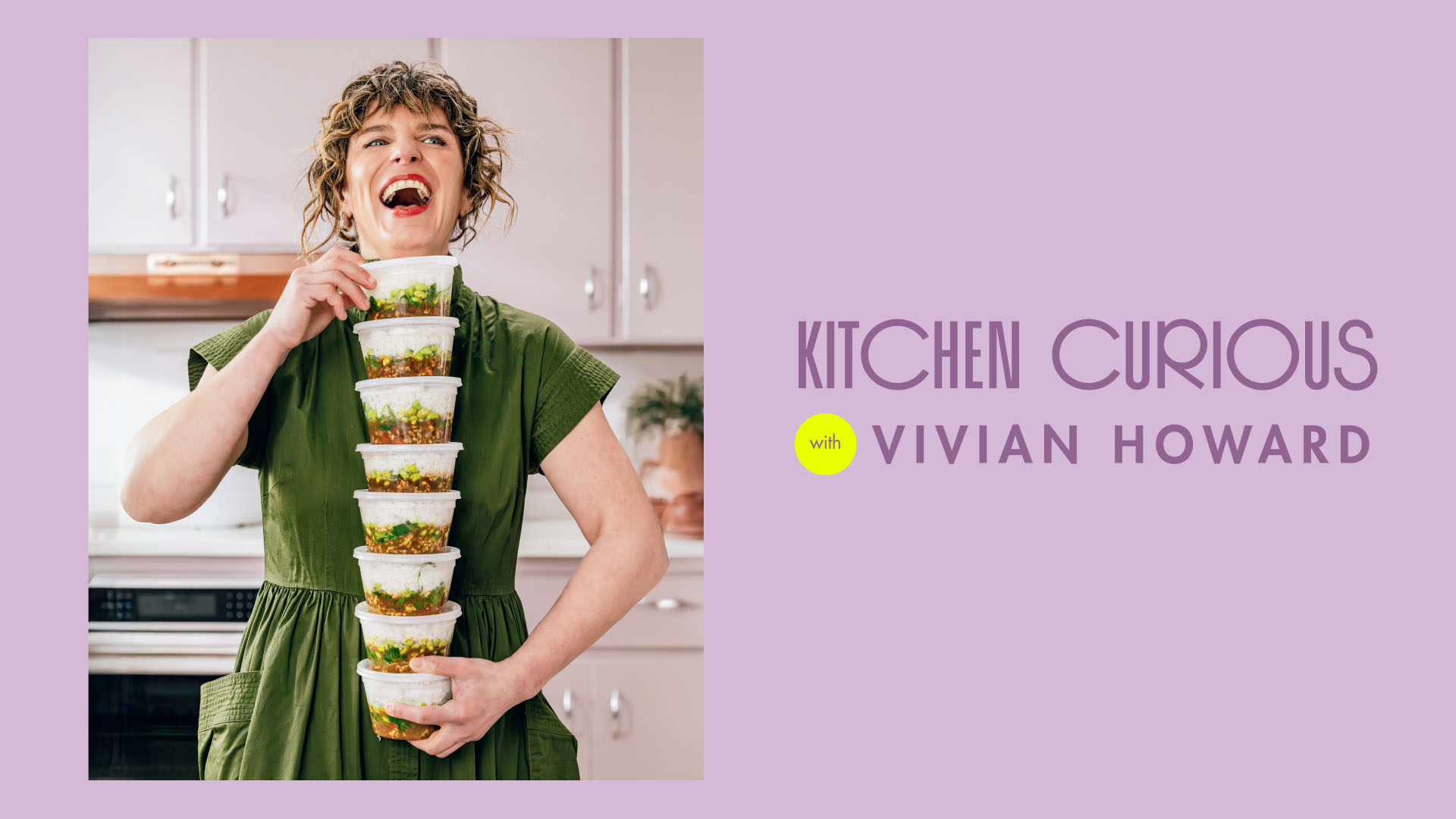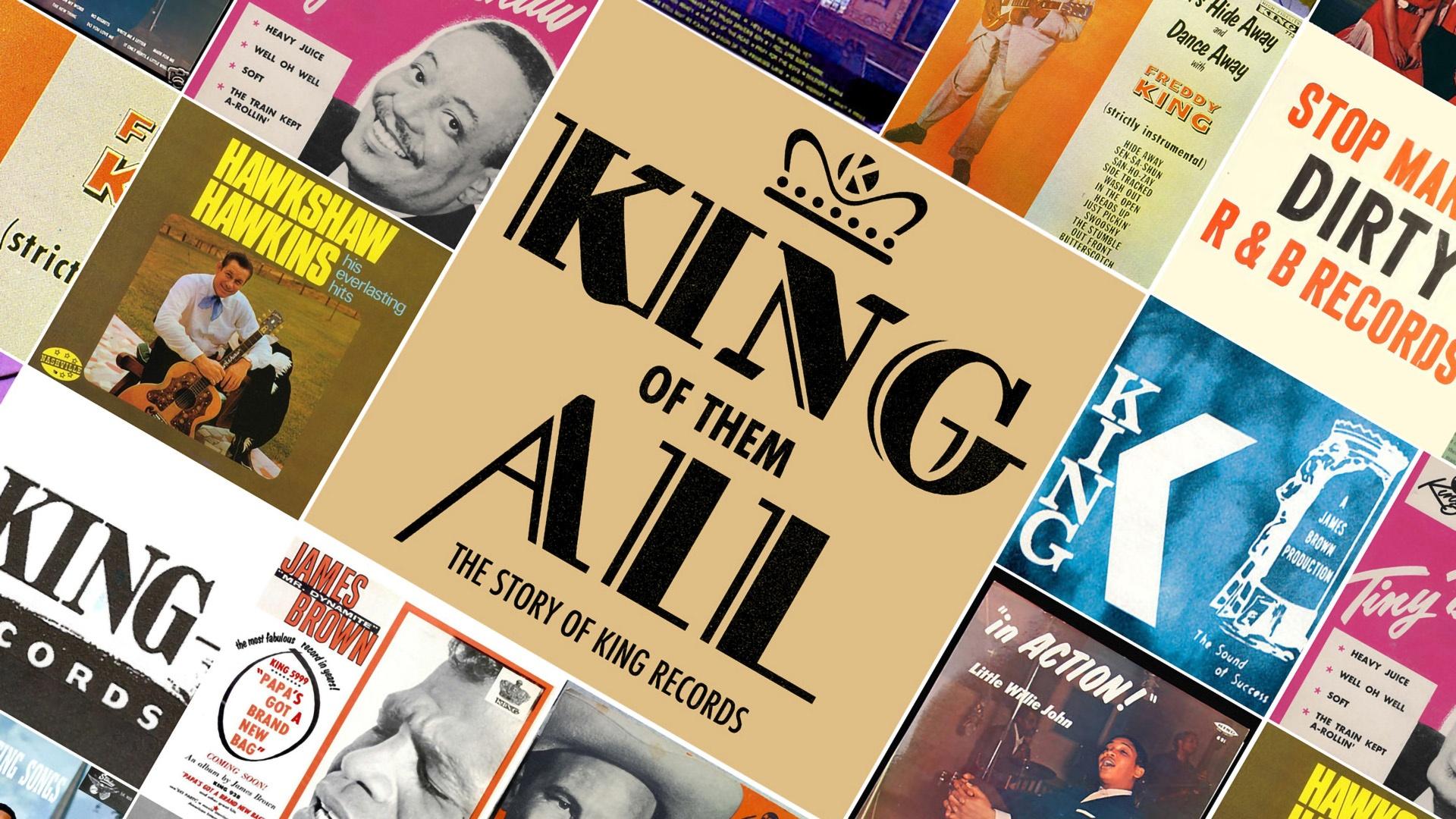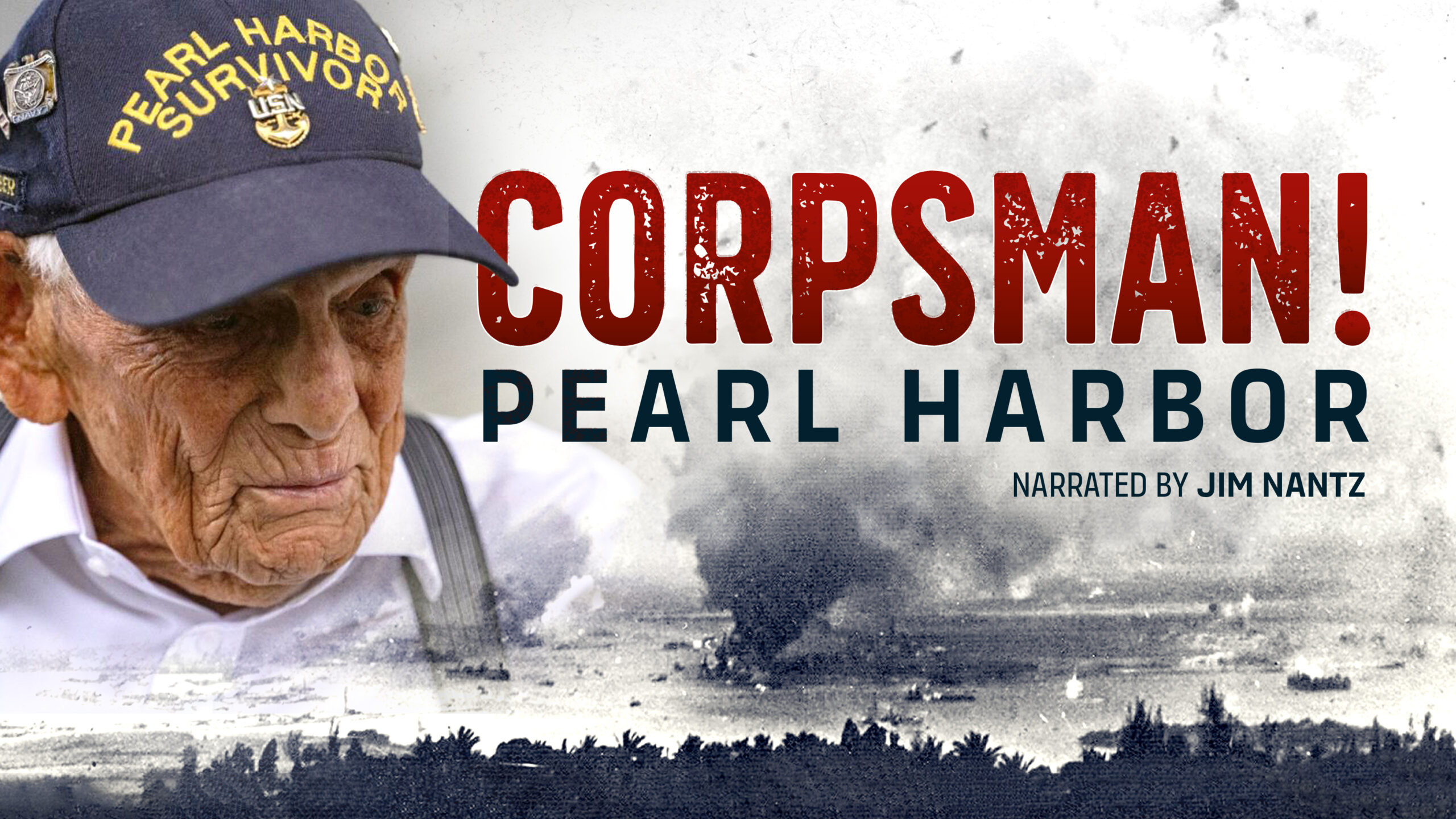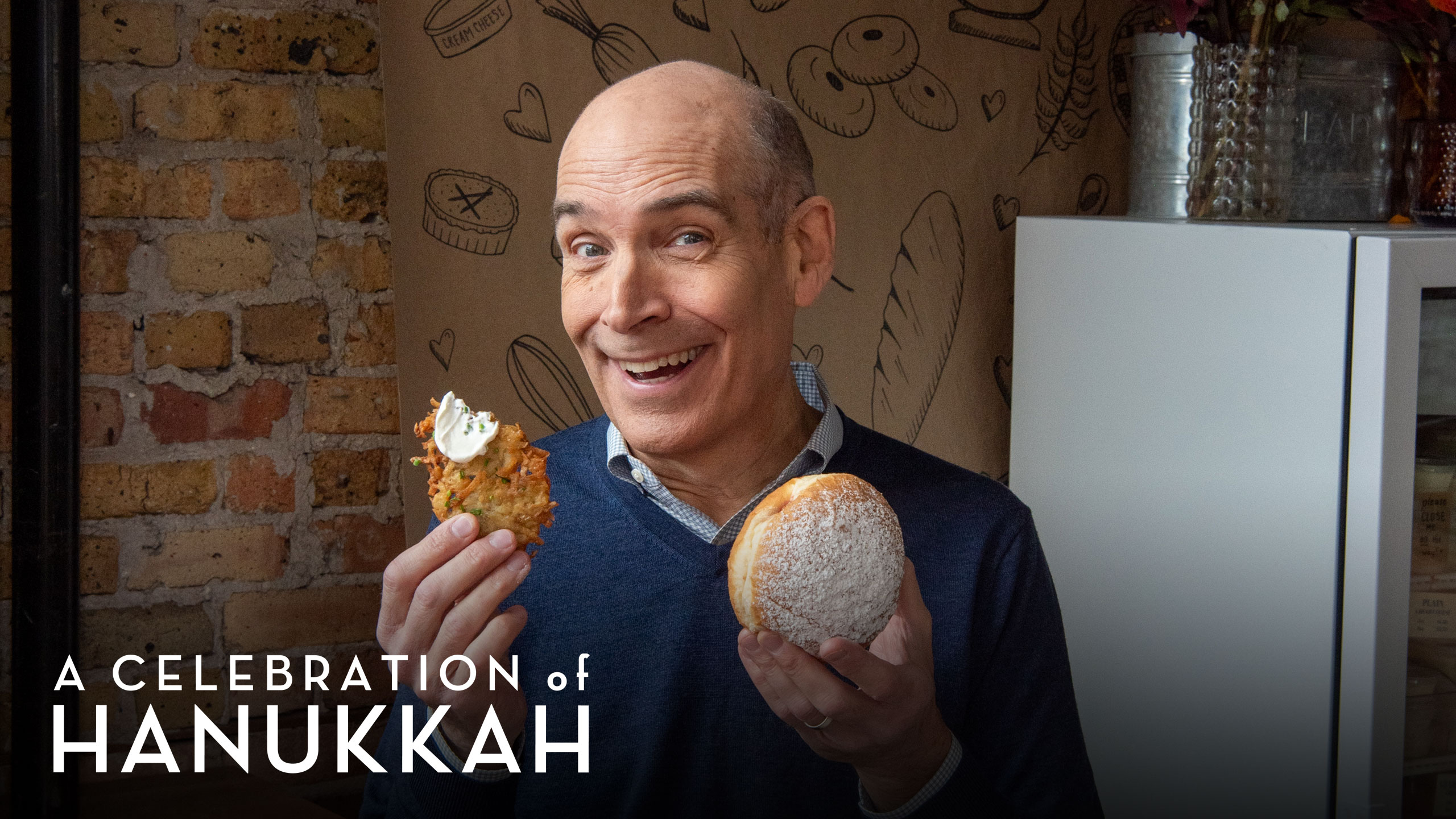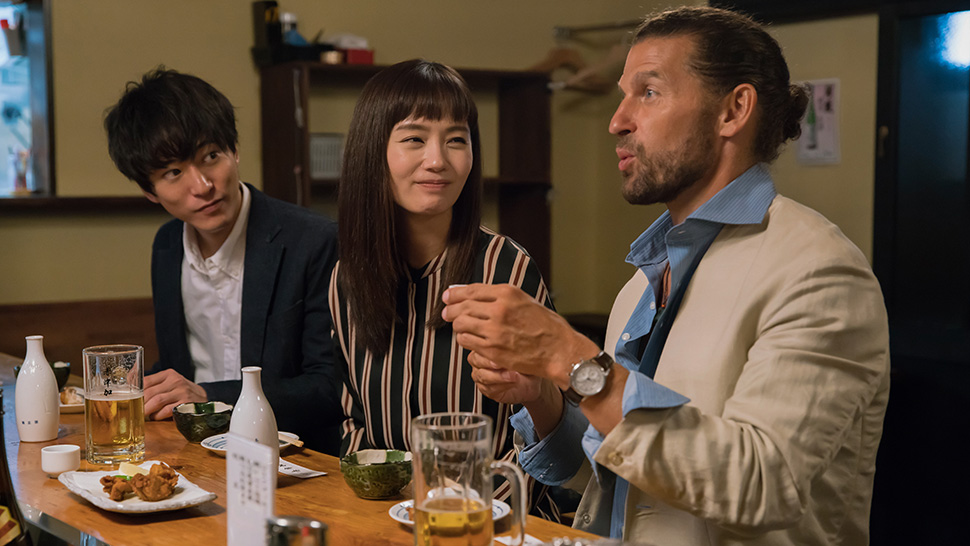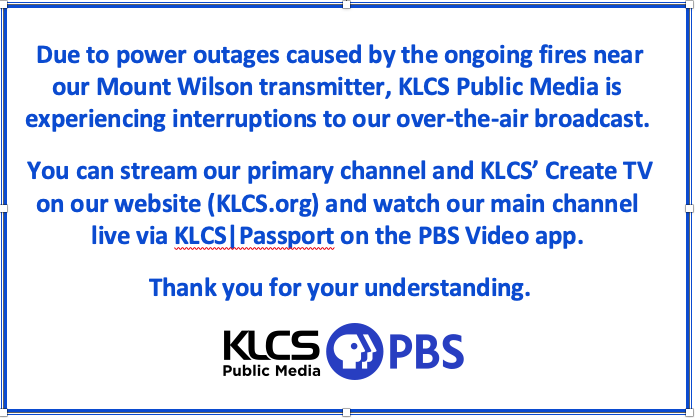Get ready to smile! Tom Caltabiano, executive producer, writer and comedy veteran, brings his latest creation to life with Hello! Hi! How Are You?—a charming new children’s educational program airing Monday mornings on KLCS Public Media. Starring the lovable character Mr. Clown and his quirky friends; the series features special appearances by television legends like Phil Rosenthal, Ray Romano and Allison Janney. But how did this whimsical world come to be? In this exclusive interview, Tom reveals the inspiration behind Mr. Clown, the journey to KLCS, and why a light grid in his home played a surprising role in the show’s creation!
Tom, what is the aim of your new show?
TC: To educate children and entertain them and their parents; the goal is to make educational videos that parents don’t mind watching and actually enjoy watching.
Tom, why did you want to do a kids show after a lengthy and successful career as a writer/producer and being in comedy?
TC: I’ve always had this puppet character Mr. Clown for the longest and I would entertain my friends’ kids, including Raymond, before Everybody Loves Raymond. So I have video of me in Ray’s living room in Queens, New York, entertaining his 3-year-old twins and 5-year old daughter. That family, obviously, became the basis of Everybody Loves Raymond. And I would always entertain kids, and then, years later, I had done a show for my friend in New York, for her 5-year old daughter, and there was a producer that I had worked with. I had done a food show in Korea called Kimchi Chronicles and that producer asked me to teach him how to make bread; I had the puppet with me and we were meeting in a sophisticated restaurant. He said, “What’s in your bag?” “It’s a clown puppet. I’m not going to take a clown puppet out in this restaurant”, but later that night I did. And we just gotten back from this Korea shoot and then about a month later I randomly ran into him on an airplane, on a JetBlue flight coming back from California to New York, he sad, “You know I keep watching that Mr. Clown video from that night. It’s so entertaining, we should do a food pilot with Mr. Clown.” I said, “I can shoot something,” and I sent it to my friend who has a 6 year-old son who said, “The food thing is great, but can you do sight word videos, because I have to teach sight words to my son, and when I substitute teach. So we made videos in my house – 100 words you have to know on sight. So I made those videos, her son got a perfect score on his test. At the same time I met a guy at Google, he said, “I think you can have a broader audience than what you have.” So, that started down the road of reaching a wider audience because I knew my character was always very popular with kids, but I wasn’t thinking of a bigger audience. I got introduced to a gentleman who wanted to make a sitcom and I advised him about that, and I said, “If your looking to put some funding behind something, I have this children’s thing”. We joined forces and then through Bambi Moé, who had worked at Disney, I was introduced to KLCS – and they said “We’ve seen your content, we’d love for you to make some shows for us.” So we wrote 10 episodes and just finished turning in the 10th episode.
The show reminds me of Sesame Street, what was your inspiration for the character?
TC: The character I came up with many, many years ago; I’ve always had stuffed animals and puppets since I was three years old. I would always animate puppets, so that wasn’t new to me. But then, there was a character I had an idea for that was going to be friendly like a snowman, only with a red nose and looking like a clown, because I know there’s a lot of anti-clown sentiment out there. When you see Mr. Clown, he looks more like a snowman with a red nose; so that became the basis.
And then the ad-libbing and interaction – we wanted to do a talk show basis, and I as a human being, guest-hosted the Late Late Show after Letterman, and it was in the running to get that job and I very much enjoy listening to people, and that type of interaction. That’s why we decided to do a talk show format that kids love versus eavesdropping on dry conversations, we thought let’s go zany and try to get inside the imagination of a child and what they would like to do. We have all these elements like when Mr. Clown and Tommy, his co-host, are underneath the desk, whispering, with flashlights under their eyes, which a child would do under a blanket. So, those type of things versus what I’ve seen sometimes when I‘ve seen a talk show for kids, I feel like you’re watching the Jimmy Fallon show, only there’s a puppet, but there’s nothing that’s creative, out-of-the-box. And then many of my friends, nobody laughs harder at Mr. Clown than Raymond, so he did an element of reading. I’m friends with Allison Janney, I’ve written for her, like acceptance speeches, and we had an idea for her where she takes one of the characters, Milton, on an educational journey. And then we had Phil Rosenthal, who’s the creator has a food show now on Netflix, and we thought “Let’s have Mr. Clown drop-in on Phil with [Mr. Clown] being reluctant to try anything, and he tries it and he enjoys it. So we have all these segments that speaks to kids. And we have Kate Micucci who plays animal control, but she’s afraid of animal noises. She’s a really great actress and I just met her through the guy that did the music for Everybody Loves Raymond, Rick Marotta, he’s doing the music for our show. But he happened to be at a concert, with Roger Daltrey and John Oates, and John Oates said, “Hey Rick, what are you up to?” Rick said, “I’m doing this children’s show,” and he said, “You should meet Kate Micucci.” That was a Sunday, on Monday we had a table read, she came to the table read and we put her in the show! She also voices Nori the Norwall.
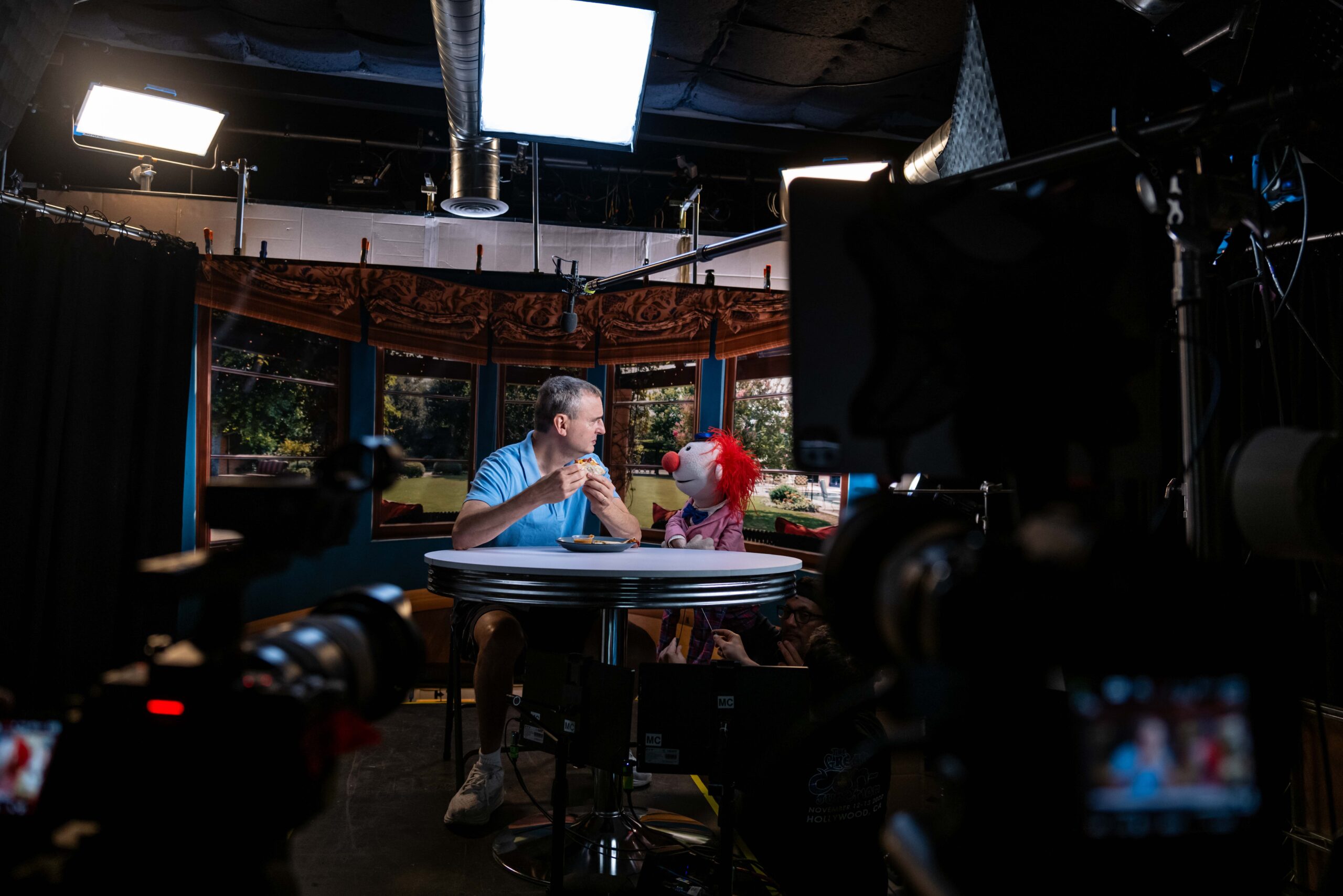
I love how you got guests, including Everybody Loves Raymond creator Phil Rosenthal, eating a favorite of mine as well – an almond butter and banana sandwich. What is your aim in having these guests?
TC: For adults, Allison Janney, Ray Romano – they mean something. For kids, they just want to be entertained. Allison is an extremely talented actress and Raymond reading, we thought that’s a great element. So, it was just to bring an element of across the age group of very talented people, who are adults. An all-puppet show is not as appealing as a puppet show where puppets interact with people.
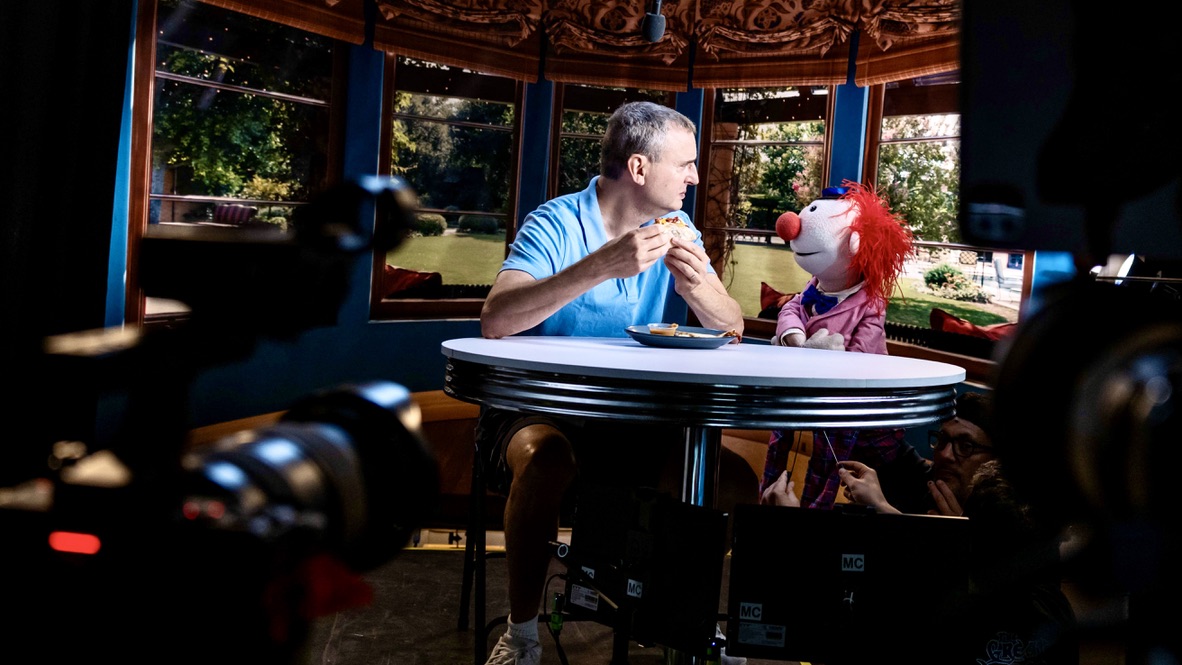
You were a writer on Kimchi Chronicles how did you get connected to that even though you were in comedy?
TC: Phil Rosenthal was trying to make the first iteration of his food show. Phil wrote an episode of Everybody Loves Raymond called “Italy: Part 1 and 2,” for season five. Ray Romano in real-life was reluctant to travel overseas. Phil had asked Ray “Where are you going? To Italy or somewhere?” He goes, “No, I’m going to the Jersey shore.” Phil’s like, “Why don’t you go to different lands?” Ray was like, “well, I really like the Jersey shore.” So Phil thought, “I have an idea – Why don’t have Ray the character have the same thing, reluctant to travel, goes to Italy and once he’s exposed to it, he gets turned and now he’s the biggest proponent of travel”. And since that day, Phil’s like, “I really would like to do that in real life.” And as you know, it’s very hard to sell anybody on any show idea no matter how successful you are. So Phil did a documentary called “Exporting Raymond” about doing Everybody Loves Raymond overseas, and he asked me to MC his appearance at the Montreal Comedy Festival. When I was there, I met a food producer and that food producer said, “Hey I’d love for you to work with me.” He was doing the Kimchi Chronicles, so he said, “Can you go to Korea?” So that’s how I got pulled him because I’m also a photographer. So I was taking pictures, which ended up in the Kimchi Chronicles book. And that became more of what I did because when Phil shot a pilot in London a few years later, he said, “Why don’t you come along and work with me”, so I took pictures and would just try and think of funny stuff on the fly. And that producer on the Kimchi Chronicles is the guy who was in New York who said, “Can you show me how to make bread?” Because I’ve been making bread everyday since 2007, and that’s how I took out Mr. Clown. And that sequence of events, producer from Korea, his friend works for google, that google guy was like “Let’s try and make this into a broader reach.” He’s coming from google where they have a broader reach.
So that was 2013. Then I had a friend, an actress and she was doing the Fringe festival in Scotland, she had a 5-year-old daughter at the time, she said, “If you can put together a show, I’ll do the show in the daytime and standup comedy at night.” So I did 30 days at the Fringe festival with my character. And that’s when I saw that kids that aren’t just my friends’ kids, a neutral audience, really enjoyed Mr. Clown.
What is your hope with this new venture?
TC: The hope is that kids enjoy it; that’s the biggest hope. And my 6-year-old son, he is my test audience. So when I drive him to school every morning, we watch an episode in the car. If he laughs, if he’s pulled in – the goal for the show is just to entertain kids and have parents enjoy the show themselves. Years ago, my friend Keeli worked for google, he was the first guy who said this could be broader, he is Korean-American and I went to Korea with him a couple times just to look for opportunities. And while in Korea, a woman came up to us and she said, there was a seminar of venture capital, she said, “We’re trying to raise a bunch of money.” She came up to one of the guys, the guy says “This woman’s in the entertainment space for kids” and she became the CEO of Baby Shark Pinkfong Company years later. So when I met her, they hadn’t done the Baby Shark song yet and their main character Pinkfong was only animated. I said, “I can make a puppet of your character in the U.S.” We made a puppet of her character. We built that, we made a video with Mr. Clown and Pinkfong, that video has like 80 million views. And then over time, the Bay Shark song took off. We’re very close friends, she would say, “The Baby Shark song is being played in Singapore, in discos!” Now it’s the most watched video in the history of YouTube, by a mile. In the meantime we were building our brand; the goal of the show brand is to appeal to children and educate children and appeal to parents. And the goal of our brand, the BopStars, is to be a full vertically-integrated children’s educational entertainment company coming from a place of – the core – is entertaining videos. One of the biggest elements for becoming successful, when Covid hit, I started live Zoom visits with children. So when they couldn’t leave their house, I called up my friend who taught kindergarten in New Jersey for years, and I said, “Hey I have a clown puppet, I can visit your kids.” So I started doing that every week and in LA I met a school teacher and was doing live Zoom classes with 400 kids at once with my character. So over three years of doing thousands of classes for kids, I learned what worked with children. I come from the Everybody Loves Raymond and writing a hit sitcom, so I knew how to do that, but I didn’t know how to entertain five-year-olds. After three years and thousands of Zooms, that’s when I knew “Okay, that can translate into this TV show.”
It’s interesting your puppetry pre-dated your career, and your child. Does it help you that you have a child? Does it influence your puppetry?
TC: Yeah, I think now it helps because I also see how a child thinks. I went to a small junior college in New Jersey, studied business, then I transferred to NYU. Studying business I worked raising money for projects and initial public offerings, etc. Then I just started doing stand-up comedy and I dipped my toe in stand-up comedy and that’s where I met Ray Romano, at The Improv. The way you get better is you must do stage time, that’s it. There is no other way. It’s not like music where you can sit and write music and perform it. You must get the audience feedback. So, with children it was the same thing on the Zooms, I would get feedback and see what worked. Now with a child, you’re really one-on-one and seeing how the imagination works. So that’s an even more intensive thing. But I was always entertaining Ray’s kids for example, I didn’t have kids, but naturally this character came out of me. So I would say it’s honed; I know how a kid thinks much more than I did back then.
You’ve mentioned taking photographs on the set, was that a hobby or did you intentionally start to document the behind-the-scenes elements of the show and eventually publish a book?
TC: It’s always been a hobby, so I have a lot of pictures of Ray, I took pictures of anything and of everything. There was an editor of Life magazine and he was saying that photographers have very much child-like enthusiasm. Generally you take pictures of what you like, you don’t take pictures of the boyfriend you hated. So the thing that I always did is, no matter who I knew, I would take pictures of the period. And so, I took pictures of Raymond before Everybody Loves Raymond. I have tons of pictures of Ray and of us doing stand-up together on the road and when I worked on the show. I just took an extension of that, I just took a lot more photos during that [time]. And then we published a book called “Everybody Loves Raymond: Our Family Album.”
Do you shot on film or digital?
TC: I do both. I think for us, we started a nonprofit, my friend who is now my business partner Jen Hegarty, she introduced me to some people who said, “I want to give money to your nonprofit.” We didn’t have a nonprofit, so we started a nonprofit at the same time. What I’ve realized is – there’s a challenge of raising money to do what you want, especially in Hollywood, just like Phil Rosenthal learned, and there’s the business and then there’s the nonprofit side. And for us, knowing that we’re working well with kids, now it’s like how do we do the funding? And I think a series on PBS adds a big element of legitimacy for people to see. So the optics have been great, having KLCS say “Yes” to the show. It helps especially with the nonprofit funders, because the truth is YouTube is where most of the eyeballs are. PBS is so respected, PBS Kids is respected, etc., but to older people who are going to help you in the nonprofit space, PBS is a much more valuable name than YouTube. And it’s a really important element.
Professionally, you do stand-up, write, produce, puppetry, photography. Are you officially a polymath? Any new skill you’re in the midst of developing?
TC: It’s funny because the one thing that I haven’t done, that I was introduced to later in life, was doing grip work – which is the person that does the rigging of the lighting etc. When I grew up, my father was a service manager at Ford, but basically that’s a car mechanic. My father was very mechanical, and on Everybody Loves Raymond when I took the cover [photo] for the book, the key grip on the show became my friend over time, and he helped me out. And then when he came to my house, we were trying to do DVD extras with Ray; Ray was so busy. And he said, “Tom, looking at your house, you could put a lighting grid in your house.” I said, “Yes, but that sounds crazy to have a full lighting grid in my house.” So a lot of the Mr. Clown set and all the stuff we were doing for videos is stuff that I built myself. Which is not the norm I would say for a comedy writer. So I would do the grip work; 99% of it was done by me. What I’ve found is, you have all these creative people and a lot of times very few are working in what they want to do. I met this puppeteer, Brock Morse, we made the whole set out of cardboard so a kid could build it themselves. The entire conceit of the show is that it all takes place in Mr. Clown’s imagination. So if a kid had a talk show, this is what it would be like.
Is there a plan to “syndicate” within PBS and make it available to other stations?
TC: That’s the goal, yeah. We have to complete our 10 episodes and from what was explained to us at PBS and KLCS has been super great to us, Jorge has been phenomenal in explaining and holding our hand and whenever we have to make a deadline. We had a great team of people, there’s two people that wrote it with me, Zach Foster and Nee Kirschmann.
Hello! Hi! How Are You? Airs Monday mornings at 7:30 AM on KLCS; visit klcs.org/schedule for the most up-to-date broadcast information. Don’t worry if you missed it on the air; Hello! Hi! How Are You? is now available to watch on-demand via KLCS|Passport, on any device!
Keep up with Tom and his photography on social media: Instagram and X/Twitter. And, keep the learning and fun going with Mr. Clown on his website.

